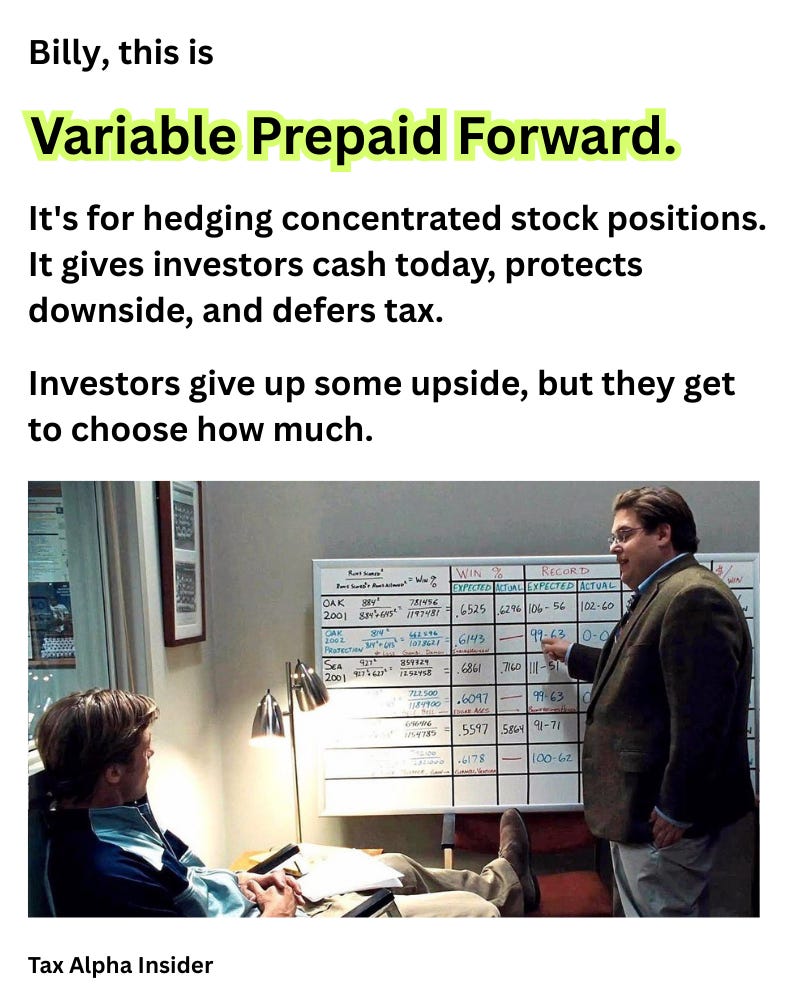Variable prepaid forwards for the rest of us
The basics of a common but complicated solution for hedging big stock positions
Variable prepaid forwards are a tool for hedging concentrated stock positions
The hand-wavey description of a variable prepaid forward (VPF) goes something like this…
A broker/dealer gives an investor money today, and the investor pledges some shares and agrees to deliver a variable quantity of those shares (or cash) in the future.
The investor is hedged …


